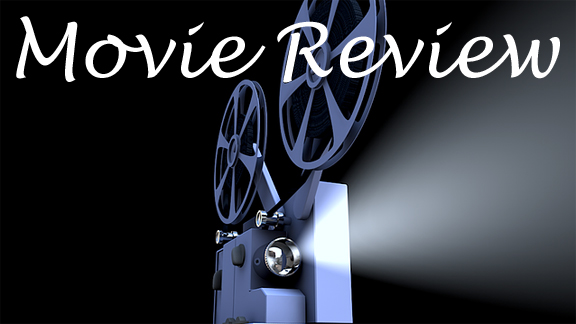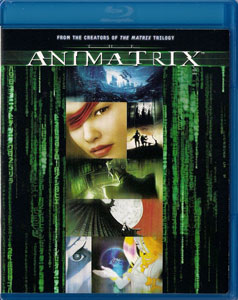Released between the two sequels in the summer of 2003, “The Animatrix” – a 100-minute DVD collection of animated shorts – fills in some gaps and gives us a fuller picture of the “Matrix” mythology. The storytelling is sharp, some written by the Wachowskis or based on a story by them, and the animation is consistently beautiful while running a gamut of styles.
It’s not for fans strictly into the kung-fu fights or the main characters (who only make cameo appearances), but it’s a treasure trove for those who want new angles into the material and fewer gaps in the narrative.
Here are my rankings of the nine (actually eight, because “The Second Renaissance” is labeled as a two-parter) shorts:

“The Animatrix” (2003)
Directors: Peter Chung, Andrew R. Jones
Writers: Lilly Wachowski, Lana Wachowski
Stars: Kevin Michael Richardson, Pamela Adlon, John DiMaggio
1. “Beyond” (episode 7, written by Koji Morimoto)
The most top-to-bottom engaging piece in the collection runs with the idea that a “haunted house” is a glitch in the Matrix. Similar to that gravitational anomaly in “Thor: The Dark World,” this rundown structure amid a sprawling city has an odd energy field that kids jump into and float around in.
The gorgeous anime, peaceful sound design, and simple journey of runaway-cat-seeking Yoko (Hedy Burress) draws us into “Beyond.” It’s capped by the sad but expected strategy by Agents to patch the glitchy code: The fascinating house is bulldozed and replaced with a parking lot.
2. “The Second Renaissance Parts I & II” (2-3, Mahiro Maeda, based on the comic story “Bits and Pieces of Information” by the Wachowskis)
The biggest nugget of information in “Animatrix” is the backstory of the formation of the Matrix, as told here. We sympathize with the robots as they seek to live peacefully with their human creators, even after humans have killed many of them and exiled the rest to a robot city in what seems like the Middle East desert. In a parallel to current so-called trade wars, the robots make products that humans buy and love, yet they are banned from the United Nations and their city is bombed.
One rather stupid thing in this story is that the UN decides to block out the sun in order to kill the solar-powered robots. Even considering the theme of stupid governmental bodies, this is a WTF moment. The result is expected: The loss of the sun is bad for humans, too, in equal or worse measure. This is the point where the robots innovate a new and plentiful power source – human bodies – and they create their first iteration of the Matrix.
Some fans were disappointed by the fact that Neo seeks peace at the end of “The Matrix Revolutions,” rather than the trilogy ending with human victory over the machines. I love the trilogy’s ending, as the films had shown us ambiguity about the morality of robots and computer programs by that point. “The Second Renaissance” might help more cynical fans appreciate the trilogy’s ending, as it makes it clear that humanity started the cycle of violence.

3. “Kid’s Story” (4, the Wachowskis)
Arguably the biggest underexplored hero in “Reloaded” and “Revolutions” is the unnamed “Kid” who claims Neo saved his life and who loads missiles into Mifune’s machine at the Battle of Zion. Featuring the voices of Keanu Reeves and Carrie-Anne Moss, “Kid’s Story” gives us a typical high-school-is-hell journey with a daring twist at the end: This teen (voiced by the film actor, Clayton Watson) is the first known person to self-substantiate.
In other words, he wakes up without taking a pill or having anything explained to him by Morpheus. I’d say this makes his awakening even more impressive than Neo’s.
4. “Final Flight of the Osiris” (1, the Wachowskis)
If you want to know the story of how Zion gets tipped off that the machines are coming – something the humans talk about in fearful tones forever before the sentinels arrive – you get it in this series opener. When watching frames with the ship and pursuing sentinels, and the Machine City and those Death Star II-style conduits, the animation is similar to the movies. The portrayal of the humans is crisp too, in a tragic heroes’ story built around the love of Jue (Pamela Adlon) and Thadeus (Kevin Michael Richardson).
5. “A Detective Story” (8, Shinichiro Watanabe)
For sheer style, this is the one you want. Ash (“Star Wars: The Clone Wars’ ” James Arnold Taylor) is a voiceover-spouting hardboiled sleuth, and the black-and-white animation reflects this. Ash is hired to pursue Trinity, but he’s a pawn in a game he doesn’t understand between her and the Agents.
6. “Program” (5, Yoshiaki Kawajiri)
This is an interesting think piece: Duo (Phil LaMarr) wants to return to the blissful ignorance of his sleeping pod (same as Cypher, although we don’t know how Duo plans to go about getting plugged back in to a pod), while Cis (Burress) wants to continue living in reality. Duo wants to live a good life; Cis wants to live a real life. As with Cypher’s, Duo’s “reality is what you make of it” argument is more tempting than we red-pill types would like to admit.
7. “World Record” (6, Kawajiri)
This entry posits that there is another route to awakening rather than your brain grasping that something’s not right with the world (the path that Neo and most of the film’s heroes take). Instead, you could have a revelatory experience via drugs … or athletic achievement … or … Well, it’s kind of confusing, but the unorthodox animation is great – for example, focusing on Dan’s (Victor Davis) muscles as he runs.
8. “Matriculated” (9, Peter Chung)
The series’ final entry is just plain weird. I think it aims to give us a robot’s perspective on humans, as a robot seems to be plugged into a program along with a circle of humans. Since the robot saves a woman’s life when the sentinels attack their fortress, it seems the robot has learned to like humans. But I’m not sure. The trippy – almost drug-trippy — animation is something to behold, though.

